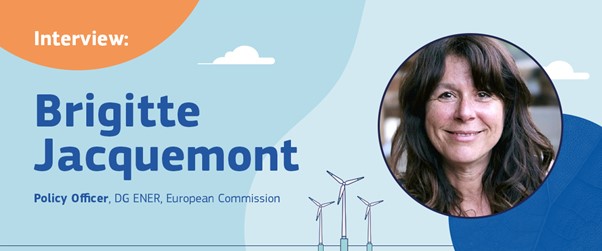
In this edition of The Level(s) Interview, we speak to Brigitte Jacquemont, Policy Officer in the European Commission’s Directorate-General for Energy, Unit B.3, Buildings and Products.
Brigitte has been deeply involved in the revision of the directive on the energy performance of buildings (EPBD) and will be presenting on this topic at the upcoming Level(s) webinar on the EPBD.
In this interview, Brigitte tells us about the background to the revised directive and its relevance for the Level(s) community.
What does the European Commission aim to achieve with the revised EPBD?
The EU building sector is one of the largest energy consumers (approx. 42%) in Europe, responsible for more than one third of energy-related emissions.
The decarbonisation of the building sector is essential both to reach the Union’s energy and climate targets laid down in the Fit for 55 Package, and to reach the REPowerEU objective to secure independence from fossil fuel imports.
With the EPBD recast and other EU initiatives, such as the recently adopted Energy Efficiency Directive, the Renewable Energy Directive, and the EU Green Taxonomy, we now have a very solid enabling framework to improve the building stock, to unlock multiple benefits (health, equality, resource efficiency, digitalisation) and to protect the climate.
In your role in the Commission’s Directorate-General for Energy, how have you been involved in developing, and now implementing, the revised directive?
DG ENER is working to accelerate Europe’s clean and just energy transition to be the first climate-neutral continent by 2050. Buildings are at the heart of my unit's mission, and we have worked on several important initiatives in recent years as part of the Green Deal and Fit for 55, in particular of course the revision of the EPBD.
The revised EPBD, which entered into force on 28 May, is a key element to implement this Fit for 55 package.
Over the coming months and in 2025, DG ENER will provide plenty of guidance to Member States, which is intended to support them in the transposition of the new directive to the utmost extent possible.
The revised EPBD will require practitioners to disclose the life cycle global warming potential (GWP) of new buildings using a calculation measure drawn from Level(s) indicator 1.2. Why is this requirement so important for achieving a circular built environment?
The EPBD recast sets a new ‘gold standard’ for new buildings (Zero Emission Buildings), which must have excellent energy performance and zero on-site emissions from fossil fuels from 2028 (public) and 2030 (all).
To fully decarbonise the building stock, the new EPBD goes further and addresses carbon emissions over the full lifecycle of buildings, through mandatory calculation and disclosure of this information for new constructions.
This provision aims to inform citizens and businesses and raise awareness. It also marks the start of a forward-looking approach to address resource efficiency, circularity, and sustainability.
How can Level(s) support the buildings sector to align with the revised rules of the EPBD, including through its indicator 1.2?
The EPBD in Annex III provides some guiding principles for calculating the GWP and refers in particular to indicator 1.2 of Level(s). Indeed, we want to build on the work that has been done for the development of the EU framework and on the available resources.
Level(s) was developed to raise awareness on a whole life cycle approach and to allow stakeholders to gradually increase their skills on this subject. This will be a great support for Member States that have not included life cycle analysis of buildings in their legislation.
You are also developing a delegated act and guidelines for Member States on how to implement the life cycle GWP requirements of the EPBD. Could you tell us a bit more about this?
The new EPBD includes two main requirements on whole life cycle emissions. As discussed previously, the first one is the calculation and disclosure of GWP for new buildings. The upcoming delegated act will be based on Level(s) and will specify Annex III. For its preparation, we will draw on the experience of countries or practitioners having established good practices.
The second requirement is the notification of national roadmaps introducing whole life carbon limit values across Europe. As mentioned above, over the coming months and in 2025, the European Commission will provide guidance to Member States to support them as much as possible in the transposition of this provision.